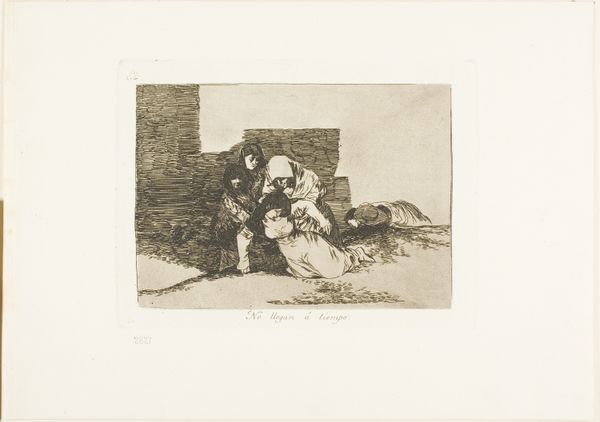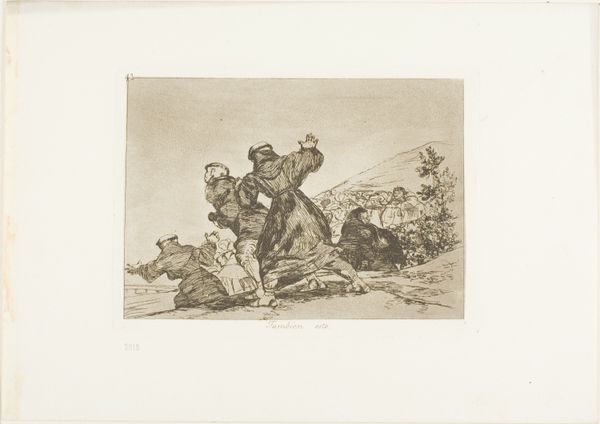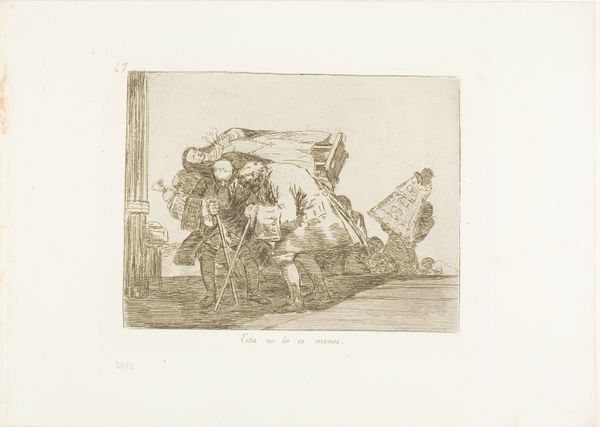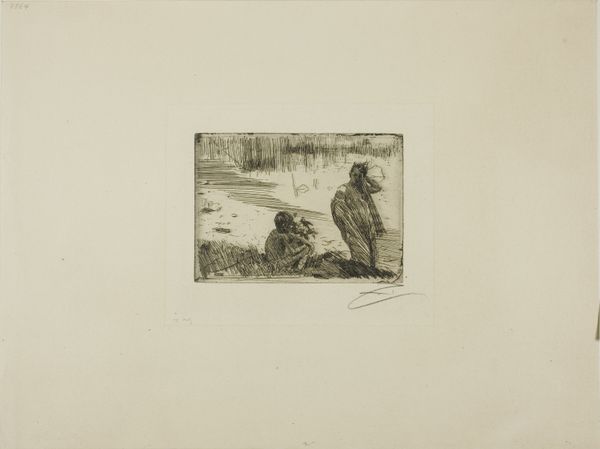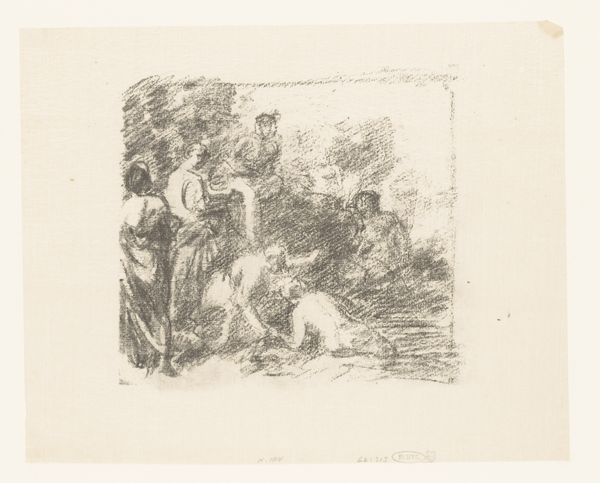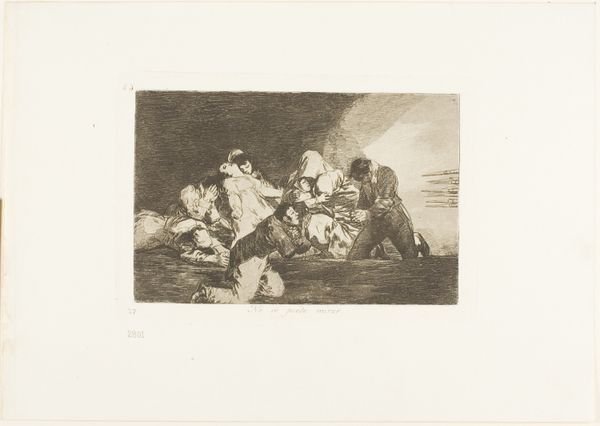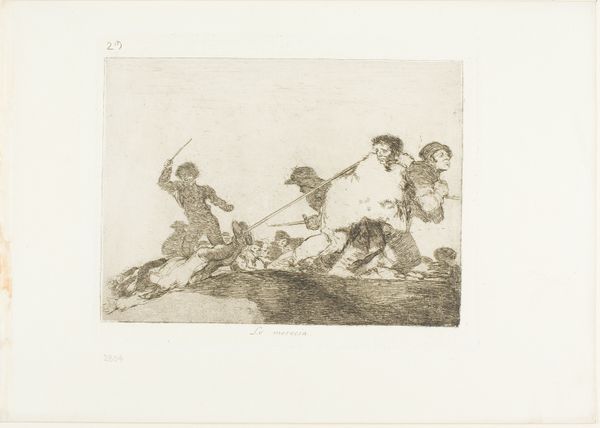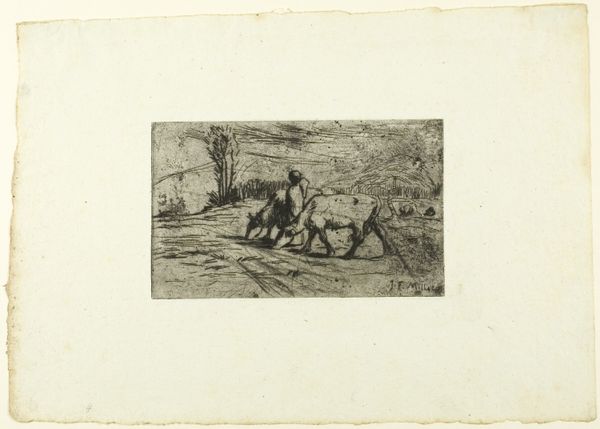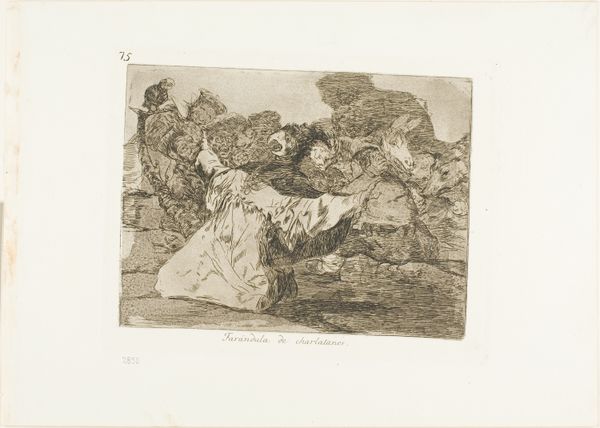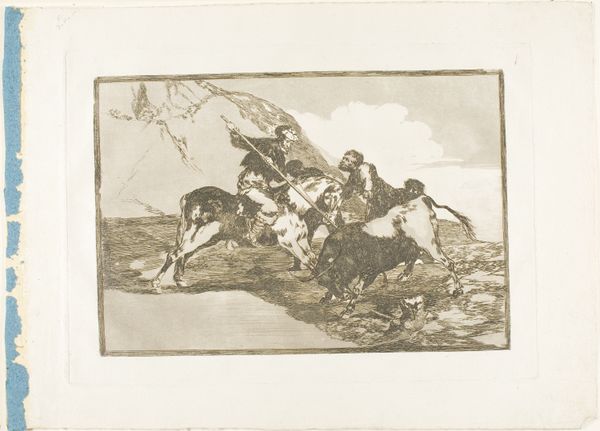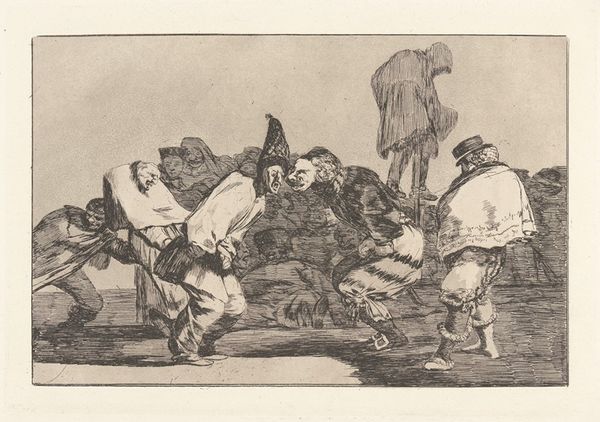
They Do Not Know the Way, plate 70 from The Disasters of War Possibly 1815 - 1863
0:00
0:00
drawing, graphic-art, print, etching, intaglio, paper
#
portrait
#
drawing
#
graphic-art
#
narrative-art
# print
#
etching
#
intaglio
#
figuration
#
paper
#
romanticism
#
line
#
genre-painting
#
history-painting
Dimensions: 149 × 192 mm (image); 175 × 220 mm (plate); 240 × 337 mm (sheet)
Copyright: Public Domain
Curator: Goya's “They Do Not Know the Way,” plate 70 from *The Disasters of War*, created between possibly 1815 and 1863, employs etching and aquatint, intaglio on paper. My immediate impression is of brutal disorientation. The scene feels claustrophobic, a tangle of bodies. Editor: Indeed. The way Goya uses the aquatint to create stark contrasts certainly amplifies that sense of chaos. The etching creates this sense of depth through light and shadow. There are clustered figures on a slope dragging a chain. Look at how the horizontal lines, along with that group of dark figures, form this looming barrier, visually and psychologically. Curator: It's harrowing. These prints, of which this is one, serve as indictments against the atrocities committed during the Peninsular War, and really, humanity more broadly. I cannot help but notice that those doing the dragging are in fact leading other bound people. There is an additional atrocity as those who suffer become those who inflict that pain onto others. Editor: That dynamic is perfectly framed. Structurally, it reflects Goya's technique of using darkness not just for contrast, but to obscure and conceal. The facelessness is crucial; it depersonalizes both victim and perpetrator. The direction is significant; that slight gradient indicates the movement, that idea of forward march as death continues. Curator: Absolutely. The print invites us to confront uncomfortable truths about complicity, and how easily societal structures of oppression corrupt and dehumanize. I notice too how gender functions here: the people being dragged are also women and children. It’s not a purely masculinist vision of conflict but a wider view of societal unraveling. Editor: Goya understood how to translate philosophy into form. The very lines seems to vibrate with horror, but even more, the scene seems to argue a certain inescapable aspect of this destruction. There is a semiotic layering here—bodies, posture, movement—that points us to both immediacy and inevitability of this devastation. Curator: Thinking about Goya’s broader body of work, he forces us to acknowledge our collective responsibility in perpetuating these cycles of violence. It seems like there is almost an implied cry against the supposed project of enlightenment, here. Editor: The piece leaves one disturbed. As it should. It's a composition born of great intensity.
Comments
No comments
Be the first to comment and join the conversation on the ultimate creative platform.
